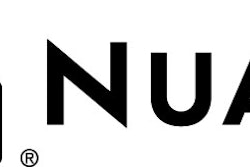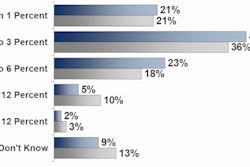CHICAGO - Speech recognition is often maligned as a technology that improves radiology report turnaround time at the expense of reduced radiologist efficiency and satisfaction. But a research team from East Carolina University (ECU) has found that radiologists who occasionally send reports to editors for transcription are significantly more productive.
"Radiologists who used the editor function dictated significantly more reports than those who did not," said presenter Dr. Brian Kuszyk of Brody School of Medicine at ECU in Greenville, NC. He presented the study Tuesday at the 2009 RSNA meeting in Chicago.
Use of speech recognition technology in radiology has become widespread in both academic and private practice settings, yielding reduced report turnaround times and potential cost savings due to reduced transcriptionist needs. However, it's also been associated with higher report error rates, reduced radiologist efficiency, and high radiologist dissatisfaction rates, Kuszyk said.
The ECU researchers sought to evaluate the utilization and impact of the "send-to-editor" function on the PowerScribe speech recognition system (Nuance Communications, Burlington, MA). This capability allows speech recognition files to be sent to an editor/transcriptionist for editing; the radiologist then again reviews the report for final approval.
Commonly used in private practice settings, this function has the potential to improve report accuracy as well as radiologist efficiency and acceptance, Kuszyk said. To study its impact, the researchers performed a three-year study at a six-hospital system, including a 9,800-bed tertiary referral center and five smaller surrounding regional hospitals.
Speech recognition was installed initially in the system in 2002, and it became the only system used for reporting in July 2005. Enterprise-wide PACS is utilized in the system, which features a subspecialized private practice radiology group.
Radiologists are asked to self-edit their reports whenever possible, and regular feedback is provided regarding the use of editors, Kuszyk said. No financial or other incentive system is employed to promote self-editing.
Editors are available continuously, with gaps in coverage of no more than two hours, he said. Speech recognition and editor costs are paid by the hospital.
During the study period (October 2005 through October 2008), the number of radiologists increased from 37 to 50. The monthly report volumes also increased from a low of 16,837 in February 2006 to 25,221 in August 2008.
In the study, radiologists who used the send-to-editor function dictated an average of 601 reports per month, a 41% improvement over the 439 reports per month produced by the radiologists who self-edited all cases. The difference was statistically significant (p < 0.001).
"The effect was most pronounced for radiologists reading significant numbers of [computed radiography (CR)] exams," Kuszyk said.
In other findings, monthly editor utilization remained relatively constant at a mean of 20.9% of reports throughout the study period, ranging from a mean of 11.8% in January 2006 to 27.1% in November 2007. The percentage of radiologists using the function also held relatively steady at a mean of 46.6%, ranging from 36.1% in January 2006 to 57.9% in August 2006.
By subspecialty, 79% of interventional radiologist used the function, the most in the study. The lowest utilization (16% of radiologists) was in the neuroradiology group.
With the exception of interventional radiology, an increase in monthly productivity was experienced in all sections for those using the editor function compared with those who self-edited all reports.
Statistically significant increases were noted in the general radiology and regional radiology groups; these radiologists read large numbers of CR studies.
By Erik L. Ridley
AuntMinnie.com staff writer
December 1, 2009
Related Reading
Individual factors affect gains from speech recognition, June 17, 2009
Financial analysis essential in VR purchase decision, May 13, 2009
Radiologists underestimate overlooked SR report errors, January 23, 2009
Speech recognition vendors tackle dialect challenges, December 17, 2008
SR technology is no panacea for reporting work habit change, December 15, 2008
Copyright © 2009 AuntMinnie.com




















